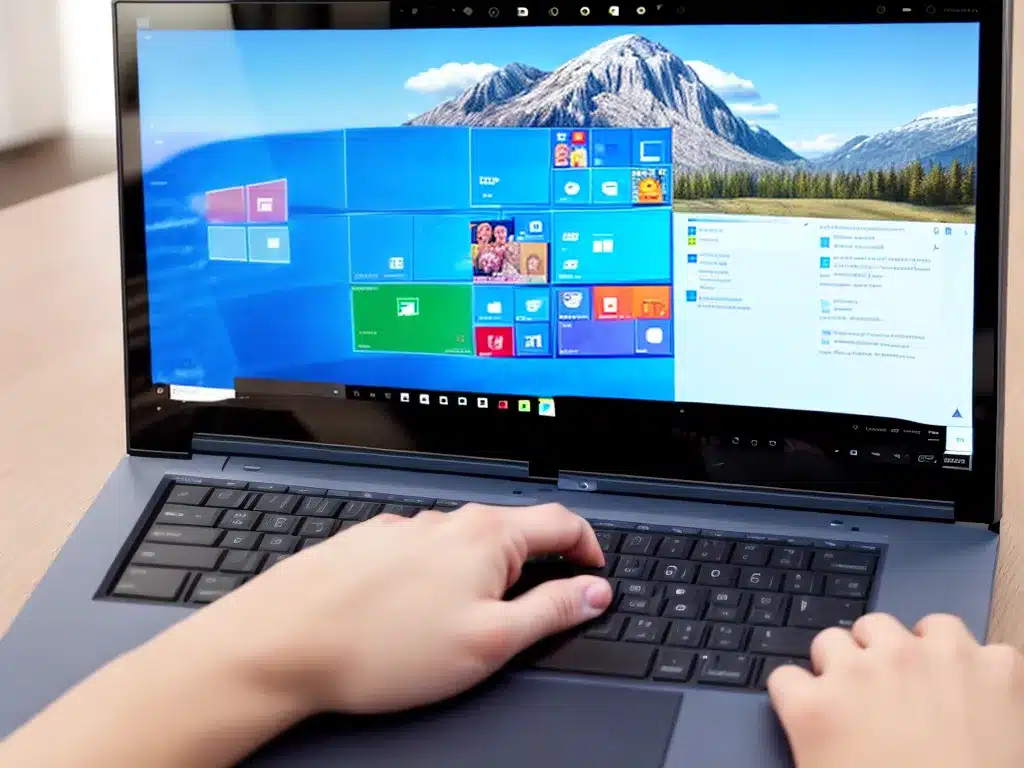
Screen recording allows you to capture video and audio of your desktop screen. This can be useful for creating tutorials, recording gameplay, documenting processes, and more. Screen recording is built into Windows 10, so you don’t need any additional software to get started.
Steps to Screen Record on Windows 10
Screen recording on Windows 10 is easy to set up. Here are the steps:
Enable Game Bar
The Game Bar feature in Windows 10 allows you to record your screen. To enable it:
- Open the Start menu and select the Settings gear icon.
- Select “Gaming” from the Settings options.
- Toggle “Record game clips, screenshots, and broadcast using Game Bar” to On.
Open Game Bar
Once Game Bar is enabled, you can open it using the Windows key + G keyboard shortcut.
The Game Bar interface will appear. This is where you can start and stop recordings.
Start Recording
To start recording your screen:
- In Game Bar, select the red dot icon to start recording.
- A 3-second countdown will appear before it starts capturing your screen.
- To stop recording, select the square Stop button.
The video will save to Videos > Captures in File Explorer.
Customize Settings
You can customize Game Bar recording options by selecting the settings cog icon:
- Audio device – Choose which microphone audio to capture.
- Video quality – Higher quality increases file size.
- Frame rate – Higher rates are smoother but take more space.
- Capture duration – Set a time limit for recordings.
There are also options to record system audio and use a camera overlay.
Keyboard Shortcut
Instead of opening Game Bar, you can start/stop recordings using a keyboard shortcut:
- Windows key + Alt + R – Starts recording after a 3-second countdown.
- Windows key + Alt + R again – Stops the recording.
This allows you to record without having Game Bar on screen.
Tips for Better Screen Recordings
Here are some tips for high quality screen capture:
- Close other running programs to avoid lag.
- Arrange windows how you want them to appear in the video.
- Use display or game mode to disable notifications.
- Adjust audio levels to balance game and microphone volumes.
- Use camera overlay to capture your reactions (if desired).
- Test different frame rates and resolutions to optimize quality and file size.
With the built-in tools in Windows 10, recording smooth, professional-looking gameplay videos and tutorials is simple and easy.












